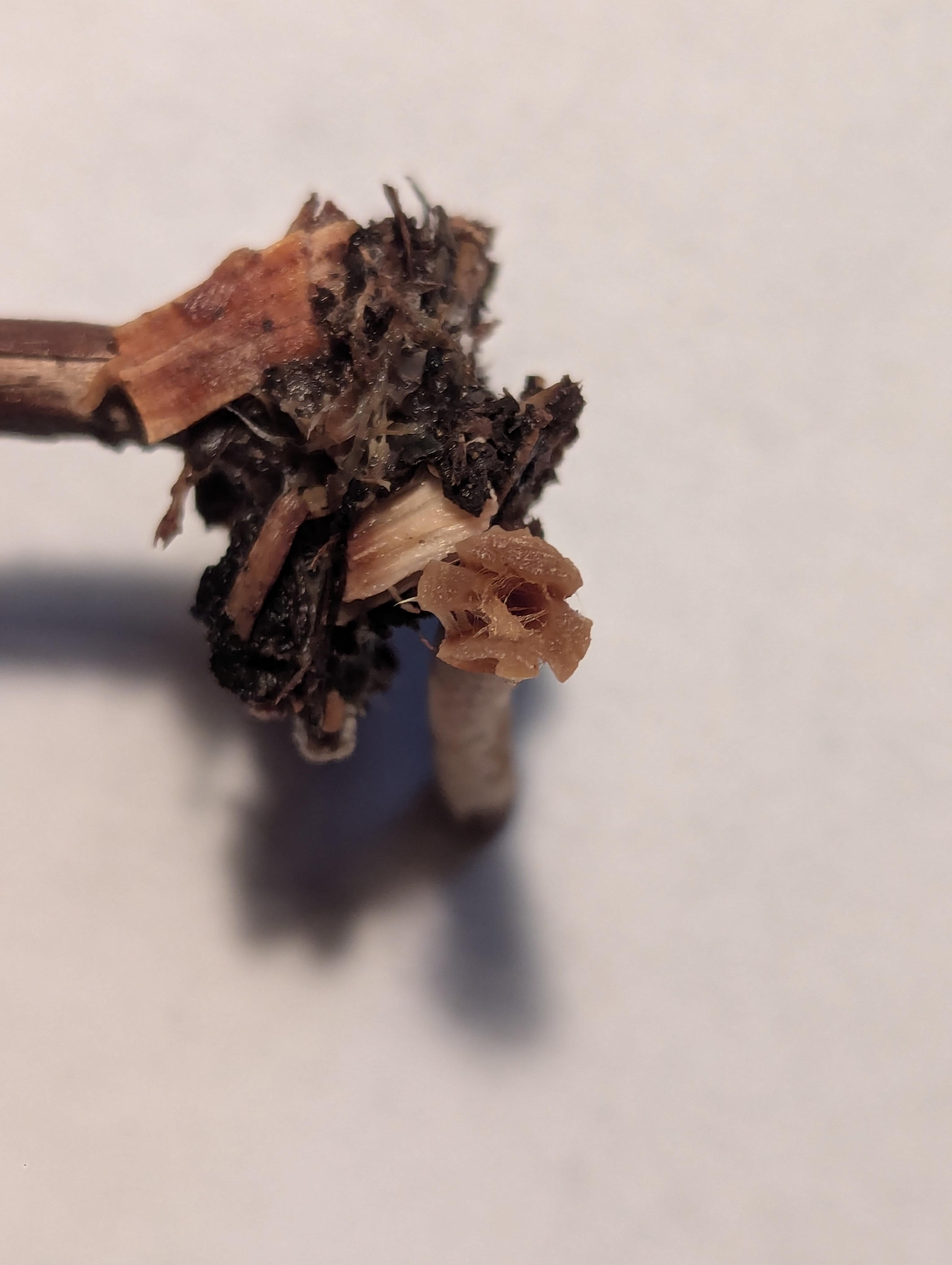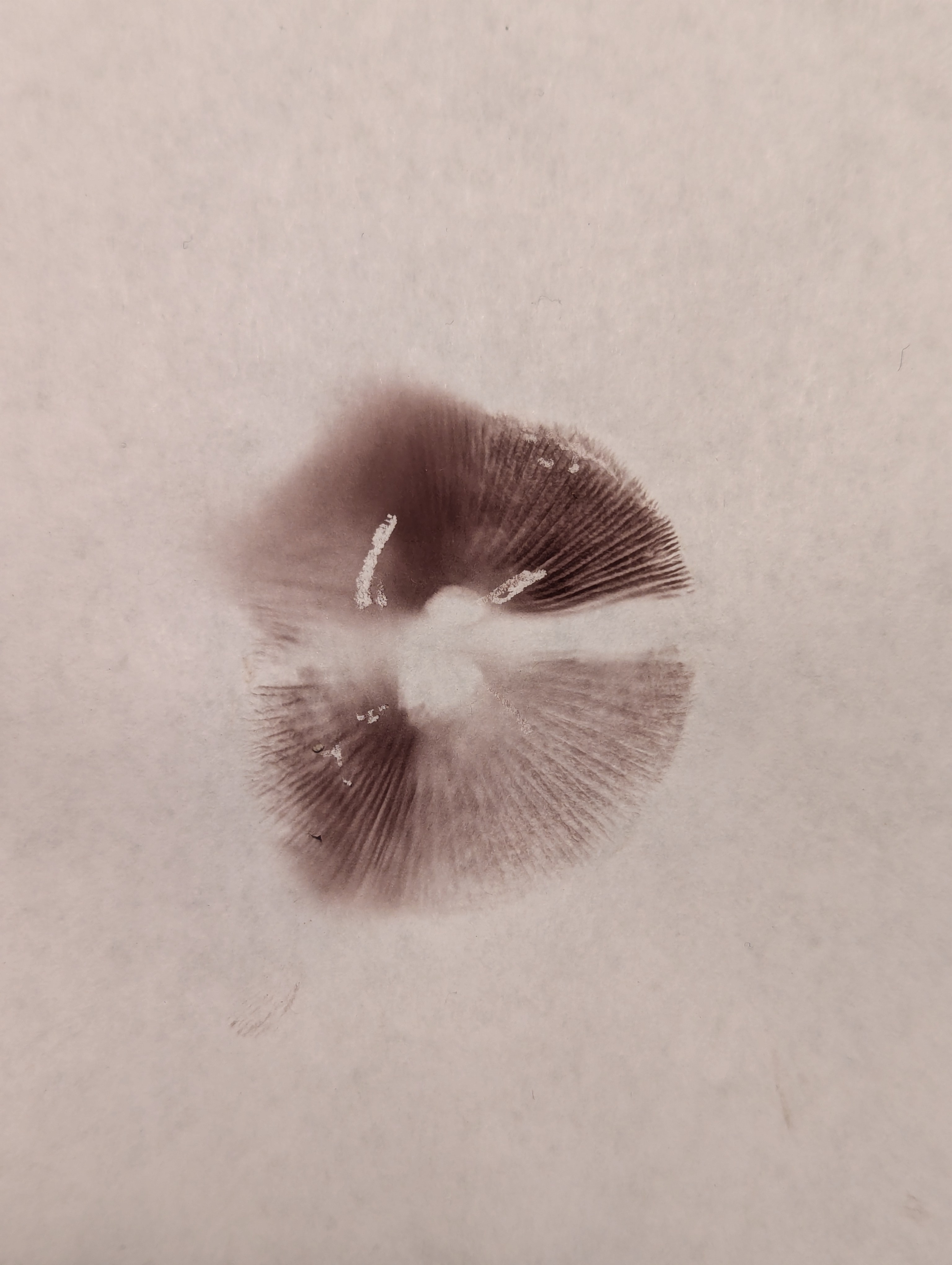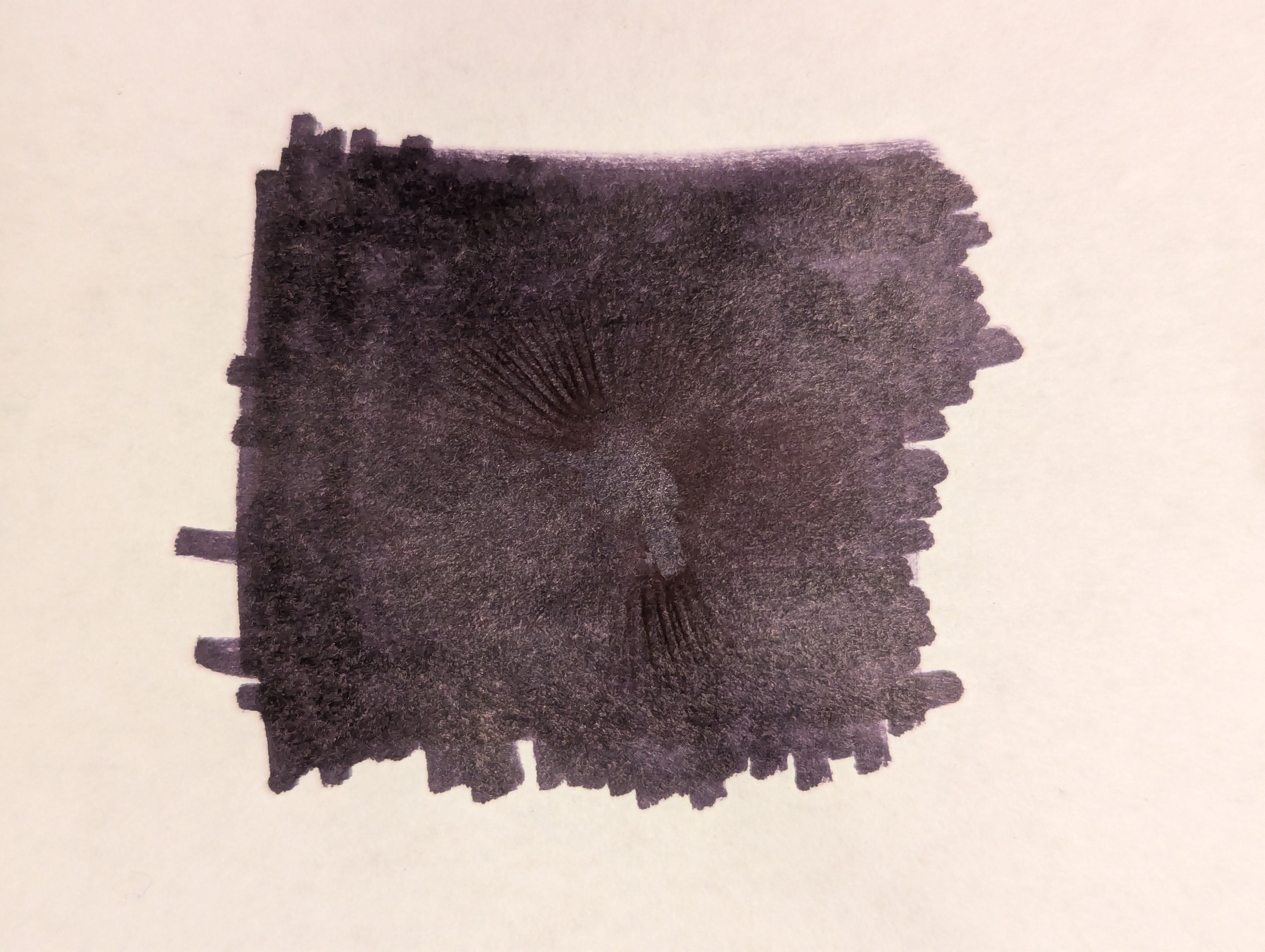View the spoiler for my guess at what I think it might be, but please first come to your own conclusion before looking at mine — I don’t want to bias your guess.
My guess
Psilocybe cyanescens
They were found in mid-november in the Salish Coast region of Cascadia. They were growing out of woodchips composed of a mixture of western hemlock (majority), and western red cedar.
Side view of one full mature specimen:

A group with a sample of the substrate (the cap appears to be umbonate):

A closeup side view, and internal view of the stem (it appears to be hollow):


Cross section of the gills — they appear to be adnate, or sub-decurrent:

Underside of view of the gills:

Spore print (first on white background (the split is due to two halves), second on a black background):


Examples specimens once dried:


Examples of the colony, and the location/substrate in which it was growing:


Cross-posts:


Sorry to disappoint but looks like hypholoma dispersum to me.
If the cap cuticle is peelable you could make a case that it’s not Hypholoma but without any blueing it’s gonna be Deconica not Psilocybe.
For clarity, are you saying that all species in the genus deconica have a peelable cap cuticle?
It’s probably not 100% absolute but most Deconica and Psilocybe have a peelable cuticle to some extent.
I gathered another sample of the mushroom, and, from what I can tell, the cuticle is not peelable/it has no pellicle.
That’s consistent with Hypholoma, maybe next time.